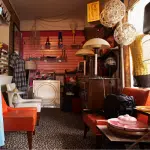
Spotty sick leave policies limit options for avoiding virus
LONDON — A barber in Beijing is supporting his wife and child by charging food and other expenses to a credit card while he waits for his employer’s shop to reopen. A waiter at a barbecue restaurant in Kansas City, Missouri, washes his hands more often and hopes for the best. A parcel delivery driver in Britain worries about getting sick from the people who sign for their packages.
While white collar workers trying to avoid contagion can work from home or call in sick if they experience symptoms of the virus, that’s not an option for the millions of waiters, delivery workers, cashiers, ride-hailing drivers, museum attendants and countless others who routinely come into contact with the public.
Their dilemma is often compounded by spotty sick leave policies or inadequate health insurance coverage, leaving them vulnerable to the fast-spreading coronavirus that has already claimed thousands of lives and put them in a financially precarious position.
“The recommendations on what people should be doing to protect themselves really gives a sharp indication of the divide between white collar and blue collar workers,” said Shannon Liss-Riordan, a workers rights attorney in Boston. “Our social safety net is just not equipped at this moment to deal with a crisis like this, and it will disproportionately affect the most vulnerable low wage workers.”


